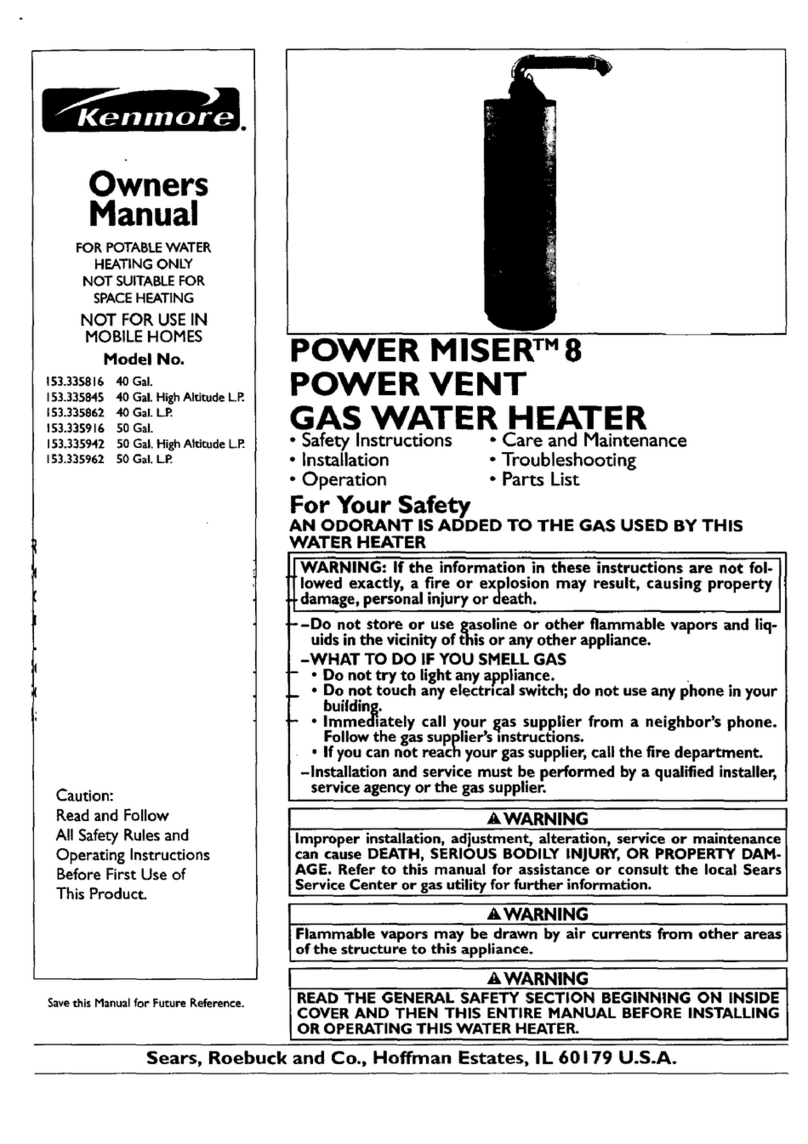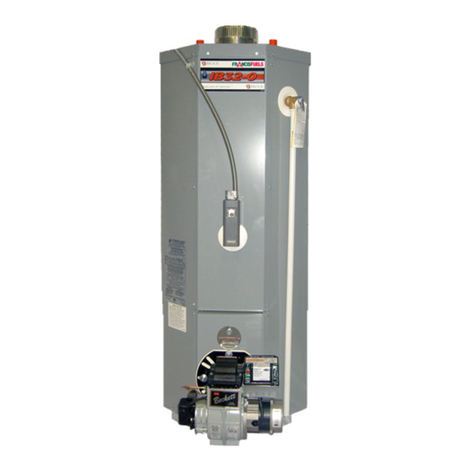ENKA MILKER 50 User manual

OPEN TYPE MILK COOLING TANK
MILKER 50 – MILKER 2000
INSTRUCTION MANUAL
Milker Melktechnik Und andels Gmb
Kronauerstrasse 54
68789 St. Leon-Rot / bei eidelberg
Germany
Tel: +49 170 805 70 36
+49 6227 8419674
E-Mail : info@milker-melktechnik.com
web : www.milker-melktechnik.com
Distributor:
ENKA Tarım Hayvancılık Ltd. Şti
Fabrika: İT B rganize Sanayi Bölgesi, 35470
Tekeli - Menderes - İZMİR - TÜRKİYE
Tel : +90 232 799 00 50 Fax: +90 232 799 01 57
Satış : 1204/6 Sok No:36, Şahinkaya İş Merkezi
35170 Yenişehir - İZMİR - Türkiye
Tel : +90 232 459 37 66 Fax: +90 232 459 42 55
E-Mail: [email protected]
web : www.enkatarim.com
Page 1

Page Content
31. Introduction
32. Safety Rules and General Instructions
33. Product Introduction
44. Labeling
5
5
5
5
5. Installation instructions
5.1. Installation placement
5.2. Milk cooling tanklevelling
5.3. Electrical connections
66. Operation principle
67. Description
6
6
8
9
10
8. Technical Specifications
8.1. General
8.2. Power Specifications
8.3. Main Dimensions
8.4. Conditions of Measurement for the Performance of the Refrigerating Unit
10
10
11
9. ow to use the Tank
9.1. Cooling Controller
9.2. Adjusting the Basic Parameter Values of the XR80CX
14
14
15
10. Milk Cooling Tank Maintenence – Cleaning
10.1. Cleaning the Tank
10.2. Cleaning the Condenser of Refrigerating
15 11. Safety Measures
16 12. Malfunktion and Troubleshooting
17 13. Mechanical Drawings (Machine Parts)
19
19
20
14. Electrical Data and Drawings
14.1. Electric Line Options Table
14.2. Electrical Drawings
115. Technical Support
Page 2

1. Introduction
Having chosen the milk cooling tank of MILKER,
you have chosen a perfect product, made by
those who perfectly know the secrets of cooling
and conserving milk The milk cooling tank is
constructed by using the most modern
equipment and technology
The milk refrigeration is performed by a
stainless steel straight direct expansion
evaporator plate, which is operated in an
economical way with the maximum
performance
The materials that are used for the construction
of the milk cooling tank are the most
trustworthy at the European Trade Market and
guarantee a long life and faultless operation of
your milk cooling tank
The controller is Italian Dixell type with a
malfunction of less than 1%
The motor of the stirrer is made in France by
Sirem and its power is 90W/230V/30 rpm (in
types of 50 ~ 1200 lit) and 120W/230V/30 rpm
(in types of 1500 ~ 2500 lit)
The close type condensing unit is made by the
most trusted material in the European market
The base of the milk
cooling tank has been
designed for safe
operation, easy
maintenance and high
aesthetics The refriger-
ating unit and the control
panel are well protected
from the external
environmental conditions
and from small animals
and rodents entering the
refrigerating unit
It has to be mentioned
that the entrance of small
animals where the
mechanisms are placed is
a very serious problem
and affects the milk tank’s
life duration The rodents
eat the cables and the
insulation material of the
piping as well as even total-ly destroy the refrigerating unit
Page 3

2. Safety Rules and General Instructions
During the design and construction of this machine everything has be done to make your job more efficient and
secure However, caution is of great importance Prevention is better than regulation
This machine is designed and constructed according to the Annex V directive 98/37 EU and the ΕΝ 292-1, ΕΝ 292-2, ΕΝ
294, ΕΝ 349, ΕΝ 418, ΕΝ 1672-1, ΕΝ 1672-2, ΕΝ 60204-1standards.
The exclamation point within an equilateral triangle is intended to alert the user of the presence of important
op-eration and maintenance (service) instructions in this manual Upon seeing you are highly advised to pay
attention to the warning and be careful of any accidents
After this symbol an instruction follows
3. Product Introduction
ATTENTION! This manual is an integral part of the milk cooling tank and has to be kept in a safe place close
to the milk cooling tank and make this known to other users. Do not expose this manual to rain or moisture.
Do not neglect to read this manual regardless of your previous experience A few moments of careful reading
will save you time and will prevent many problems Read carefully the instructions, before the start-up of the machine,
normal use, maintenance or other functions on the machine and follow exactly the following orders and warnings
Place the stickers on the machine and replace immediately if they have been lost or are not readable
Only staff that is adequately trained and is responsible for using the machine should handle it A trained
person is adequately informed or can be supervised by another trained person in order to prevent or
eliminate any risk of accident
4. Labeling
Label of manufacturer and machine technical specifications should be visible at all times it contains essential
information about the manufacturer (address, phone number, fax) and information for the proper installation of the
machine (the model, serial number, year of manufacture, refrigeration capacity in Watt, electrical power in Watt ,
voltage, refrigerant type and quantity ) and the CE mark
WARNING LABELS
The warning labels are to inform the operator of the machine or the equipment and about the remaining risks despite
all the measures adopted
Due to the nature of the product that the tank contains, hygiene rules should be applied The following labels should
be placed where all employees can see them
Page 4

Wash your hands
The inscriptions (warning labels) should
be affixed in a visible, easily legible and
not removable spot on the machine or on
to a data plate attached to the machine in
such a way that it cannot be removed or
become illegible during the lifetime of the
machine in the working environment.
Keep them clean and replace them
immediately when they become detached
or damaged.
Work with approbiate clothes
Work with hat
5. Installation instructions
5.1. Installation placement
The milk cooling tank can be installed indoors or outdoors It is very important for the milk cooling tank to be installed
in a well ventilated place with a water supply
If the milk cooling tank is to be installed indoors, make sure that this place has sufficient ventilation openings It is
recommended that the milk cooling tank is placed in such a way that the condenser lies near an opening in order for
the produced heat to be discarded
If the milk cooling tank is to be installed outdoors, it must be placed under a roof so that it cannot be affected by
weather conditions (rain, snow, etc)
It is also suggested to place the milk cooling tank on a flat surface made of concrete. The placement of the milk
cooling milk tank on a surface that can be deformed or relinquished can result in inaccurate measurements.
5.2. Milk cooling tanklevelling
The leveling of the milk cooling tank is performed by the use of a hand
spirit level Open the lid of the tank and place the spirit level on the
extremity of the edge of the tank, as shown in the below picture
Adjust the footings at the base of the tank until complete planarity is
succeeded
It is very important to install the tank levelly so that the measurements
can be accurate
Page 5

5.3. Electrical connections
An authorized electrician must do the electrical installation that will feed the tank before the placement of the milk
cooling tank
If the milk tank is single-phase, it must be connected with electrical installation of 220V, 50Hz with separate ground
conductor If the milk cooling tank is 3 phase, it must be connected with electrical installation of 380V, 50Hz with a five
polar cable (3 phases + neutral + ground conductor)
The crosscut of the cables must be in proportion with the electrical power of the milk cooling tank See table 1 of the
appendix in order to choose the type of the cable
The cable must be straight, without coils (twisted extensions of electrical cable, etc)
The milk cooling tank must be feed with a separate electrical line that is secured with a fuse or a micro-automatic for
electric motors at the electrical panel
The feeding of two milk cooling tanks from the same fuse is totally forbidden
The electrical connections of the milk cooling tanks of over or equal to 500 liters capacity must be inside
the electrical panel, and the electrical line must be connected to an industrial type socket
ATTENTION! For your protection, the milk cooling tank must be provided with an grounded protective
conductor of suitable capacity to ensure the proper grounding of the machine
After you have performed the electrical connection, measure the voltage loss in the cable by using a
voltmeter While the milk cooling tank is operating, the voltage loss must not be greater than 3% of the electrical
circuit (At a circuit of 220V, the voltmeter should measure at least 214V)
High voltage loss at the feeding cable can cause serious damage to the refrigerating mechanism, which
is not covered by the guarantee.
NOTE
Wrong connections at the terminal blocks or the socket plugging can also cause voltage loss.
6. Operation principle
The milk cooling tank is especially designed and constructed for the refrigeration and the conservation of the milk, so
that it ensures the perfect quality of the product The refrigeration and the procedure has to take place right after the
collection of the milk to minimize the possibility of vitiation or falsification of the milk during its transportation
The milk cooling tank refrigerates the milk by using a refrigeration unit The homogenous refrigeration is succeeded by
an agitation paddle, which is rotated by an electro reducer The insulated walls of the milk cooling tank keep the
temperature stable for a sufficient period of time by reducing the thermal loss
7. Description
The milk vessel tank is made of stainless steel 18/10 AISI 304 The tank vessel consists of two walls Between them
there is insulation material of environmental friendly polyurethane foam, which is inserted under controlled infusion
On lid of the tank and directly connected with the stirring motor, the agitation is adjusted This agitation paddle is
constructed of stainless steel and has two shaped ribs at both its diametrical sides This shape has been chosen for the
better and more equalized stirring of the product Inside the tank are located a dipstick and a calibration chart
The stirring motor and the control panel with the milk temperature controller are placed on the milk cooling tank lid
This controller is used as a thermostat, thermometer and a stirring state controller The milk inlet of a Ø175 diameter is
placed on the lid, too A handle is placed on the front of the cover, which is used for opening the lid
The valve of the milk inlet (DN50, Ø52) is located at the bottom of the tank (models IC 100-300LT) The base is made of
stainless steel and can be completely dismantled It consists of the upper and the bottom cover, four adjustable legs,
four footing-bases and lateral covers The base has been so designed that the tank can safely operate, be easy to
Page 6

maintain, be fully protected from various weather conditions and the entrance of small animals and rodents in the
refrigerating unit This protection is succeeded by four stainless steel covers placed at the four sides of the base These
covers are perforated so that the heating produced by the condenser and the compressor can be easily emitted
Simultaneously, the holes have such small dimensions that actually prevent the entrance of small animals and rodents
into the refrigerating unit In models IC 400-2000LT the refrigerating unit is placed adjacent to the tank, also protected
by perforated stainless steel covers
The cover of the tank is also made of stainless steel On the cover, a safety system can be adjusted so that it interrupts
the operation of the stirring system motor in case the cover is opened This system is called gravity switch The gravity
security system can be adjusted on the stirring electro-motor When the cover of the tank opens, it is activated and
interrupts the operation of the stirring electric motor As soon as the cover is closed again, the stirring operation
restarts
8. Technical Specifications
8.1. General
CONSTRUCTION: Stainless steel 18/10, DIN 1 4301 (AISI 304) for inner and outer tank vessel
TANK TYPE: Vertical type cylindrical tank, free standing, smooth inner sides, rounded angles, perfectly polished
welding, ad-justable legs for uneven floors Direct expansion bottom designed to ensure total drain of tank The design
of evaporator plates prevents milk freezing even at low milk volumes Crash test at 60BAR Function pressure: 30BAR
Fine insulation pre-cisely controlled infusion of high – density environment friendly polyurethane foam 30rpm (90W)
single-phase agitator mo-tor for IC 50 – 1200liters, 30rpm (120W) single-phase agitator motor for IC 1500 – 2000liters ,
stainless steel lid without any screws inside and one-piece agitator (without joints) Automatic stop of the agitation
motor in case the lid opens Milk inlet 180mm and stainless steel cover Elevated parts (opening handle, stirring motor
and electrical control panel) for easy cleaning Milk outlet and milk cooling tank evaporator plate inclination according
to the international standards (ISO 5708) Stainless steel springs for easy opening and closing of the milk cooling tank
lid (for IC 200 – 2500 liters) Stainless steel dip-stick and standard calibration chart IP55 panel for electric instrument
(Applicable Standard: EN 60529/91, Applicable direc-tives: LVT 73/23/EEC) Stainless Steel Butterfly valve DN50, 52mm
with one end nut, other threaded (male part), PVC cap and stainless steel chain Perforated stainless steel condensing
unit cover with removable sides for easy maintenance and for the condensing unit ventilation – protection (Patent
No : 1004080) for IC 50lt-1000lt
CONDENSING UNIT: Close type condensing unit compressor by L’Unite Hermetique, coolant type R404A (full
ecological) For the protection and the condensing unit’s better performance have been mounted solenoid valve, high
pressure switch, low pressure switch, high pressure switch for the second fun regulation (Models IC 1000-2500lt) on
the refrigerating circuit
INSULATION TYPE: INTERVOL RFN-24 Two components polyurethane rigid foam system Blowing agent used is HCFC-
141b (CFC – free system) Thickness: 45mm Density: 40kg/m3 (DIN53420) Compressive strength: 20kPa (DIN53421)
Thermal con-ductivity, 24C: 0 023 W/m K (DIN18164)
PANEL FOR ELECTRIC INSTRUMENT: PROTECTION CLASS: IP 55 class-standard (Applicable Standard: EN 60529/91,
Applicable directives: LVT 73/23/EEC) TYPE: Tank mounted
MILK CONTROLLER THERMOSTAT: OPERATING TEMPERATURE: +0 +60C STORAGE TEMPERATURE: -30 +85C POWER
SUPPLY: 230V – 50Hz 10% POWER ABSORPTION: 3VA max MANUFACTURER: DIXELL SRL, ITALY FUNCTION: When the
compressor reaches the set point, it stops its function and the auto agitation of milk begins for 15minutes pause, 3
minutes agitation and so on until the milk temperature SET+ Hy when the compressor starts again In case of probe
failure , the out-put is according to parameter “COn” - Compressor ON time with faulty probe (range: 0 255min,
val 15min) and “COF” ” - Compressor OFF time with faulty probe (range: 0 255min, val 30min) Note: All of the milk
controller parameters are ad-justable
DIPSTICK: High precision stainless steel dipstick (AISI 304) for easy and direct volume reading in mm
Page 7

8.2. Power Specifications
2 Milking
Page 8

8.3. Main Dimensions
Page 9

8.4. Conditions of Measurement for the Performance of the Refrigerating Unit
Ambient temperature: +32 0C
Evaporator outlet and emission gas superheated: 32K
Condensing temperature is +55 0C
Evaporating temperature: 0 0C
Temperature of refrigerant at condenser outlet is sub cooled within the condensing limits of the
unit
The technical characteristics of the refrigerating units are mentioned in the manufacturers
catalogues
9. ow to use the Tank
9.1. Cooling Controller
MILKER open type tanks are equipped with Dixell XR80CX controller specialized in controlling milk cooling and
preservation processes
Main characteristics:
User friendly interface
Accurate control
Manual start of agitation
All the parameters are fully configurable
Current temperature always displayed on the screen
Indication led for cooling and agitation operation
DIXELL XR80CX CONTROLLER
Exclusively the DIXELL controller XR80CX with which your milk tank is equipped performs the control of the
refrigerating milk tank
This controller is very flexible, and allows for the automatic operation of the tank with an ON/OFF switch
The stirring operation is industrially regulated and the user should take no steps in order to operate it The stirrer
operates throughout the operation of the refrigerating process When the refrigeration is completed, the refrigerating
unit stops and the stirrer operates at mode of 3 minutes rotation and 15 minutes pause (the time periods are
adjustable)
Always remember that you should:
Set the refrigerating milk tank in operation mode as soon as the agitation paddle is covered with milk Do not turn the
tank off as long as it contains milk
Turn the milk cooling tank off when it does not contain milk
Avoid opening the lid of the tank, as long as it is in operation because the stirrer stops and there is a risk of ice
formation
Page 10

If you want to take a sample of the milk while the stirring system is in the 15 minutes non-operating stage, push and
hold the
button-key to make it operate With this procedure you can take a homogeneous sample
During winter and if the temperature falls under 4oC, the milk cooling tank won’t start. It is necessary to put hot
milk in the tank and wait a few minutes until the refrigerating unit starts to operate.
9.2. Adjusting the Basic Parameter Values of the XR80CX
After the milk cooling tank is switched on, a dashed line is displayed on the controller’s screen Next, the temperature
of the room where the milk cooling tank is installed is displayed
1. First press the SET key-button together with the ( ) key ▼for at least 7seconds
2. Led Hy is displayed
3. Repeat step 2 pressing both keys for 7 sec Led Pr 2 will be displayed Release the keys and Hy is displayed
4. Press the SET key until the Hy temperature (2 0οC) is displayed
5. By pressing the SET key again the LS is displayed
6. Press the SET key, and then by pressing the () keys you can set the minimum temperature
7. The temperature is already set to 1.0 ο
C
8. By pressing the SET key, the display blinks three times meaning that the temperature you set has been stored
9. After this, the led US is displayed Press the SET key, and then by pressing the () keys you can set the
maximum temperature The maximum temperature is already set to 5.0οC.
10. By pressing the SET key, the display blinks three times meaning that the temperature you set has been stored
11. Immediately after, the led Ot is displayed which calibrate the thermostat probe Push the SET key once, and
by pressing () set the desirable temperature Press the SET key again and the display blinks three times
meaning that the temperature set has been stored The value of parameter is set to –0,5 ο
C
Soft start function
If at start up, or during the regulation process, the input signal value is higher than the “SrS+Hy”, the controller starts
the regulation considering as target temperature the parameter SrS When the temperature reaches the SrS value the
compressor stops Then after the time set in parameter Srt, the controller starts the regulation based on the standard
SET POINT
How to reset the soft start parameters
In order to reset the values of the soft start parameters you have to follow the 5 first steps of the chapter “checking
the basic parameters values “ Afterwards you have to press and release the SET key until you reach the parameter Srt
The value of this parameter is 0min and if you wish to change it you have to press the arrows After the calibrating of
the parameter press the SET key, the display blinks 3 times which means that the value has been stored After this the
controller pass automatically to the parameter SrS which adjusts the temporary stop of the compressor, the value of
this parameter is 150C and if wish to change it you have to press the arrows, after the calibrating you should press the
SET key so as to store the new value
To exit press the SET + or wait 15s without pressing a key
How to see the Set Point
1Push and immediately release the SET key: The display will show the Set point value
1Push and immediately release the SET key or wait for 3 seconds to display the probe value again
How to change the Set Point
1 Push the SET key for more than 3 seconds to change the point Set value;
2. The value of the set point will be the displayed and the
LED starts blinking
Page 11

3. To change the set value push or arrows
4 To memorise the new set point value push the SET key again or wait for 15seconds
How to start a manual agitation cycle
Push the Up ( ) key for more than 3 seconds and the manual agitation cycle will start
How to see the min temperature
1. Press and release the key
2. The Lo message will be displayed followed by the minimum temperature recorded
3. By pressing the key again or by waiting for 5seconds the normal display will be restored
How to see the max temperature
1 Press and release the key
2 The Hi message will be displayed followed by the maximum temperature recorded
3. By pressing the key again or by waiting 5seconds the normal display will be restored
How to change a parameter value
1. Enter the programming mode by pressing the SET and key for 7s (
and
start blinking)
Select the required parameter
2. Press the SET key to display its value (
LED starts blinking)
3. Use () to change its value
4. Press SET to store the new value and move to the following parameter
5. To exit press the SET + or wait 15s without pressing a key
How to lock the keyboard
1 Press and hold for more than 3seconds the () keys
2 The PΟF message will be displayed and the keyboard will be locked At this point it will be possible to see
only the set point or the MAX or MIN temperature stored
If a key is pressed more than 3seconds the PΟF message will be displayed
To unlock the keyboard
Keep pressed together for more than 3s the keys
Meaning of Led
ON: Compressor enabled
Flashing: - Programming phase (flashing with
) - Anti-short cycle delay enabled
ON: Agitator enabled
Page 12

Flashing: Programming phase (flashing with
)
ALARM SIGNALS
EE: The instrument is provided with an internal check verifying memory integrity The ALARM ‘’EE’’ flashes when a
failure in the internal memory is detected In such case call the service
P1: Probe alarm -P1- starts several seconds after the fault in the related probe It automatically stops several seconds
after the probe restarts normal operation Check connections before replacing the probe In case of fault in the
thermostat probe, the starting and the stopping of the compressor are regulated thought parameters Con & COF.
HA: Maximum temperature alarm automatically stops as soon as the thermostat temperatures returns to normal and
when defrosting stops
LA: Minimum temperature alarm automatically stops as soon as the thermostat temperature returns to normal and
when defrosting stops.
Label Name Range Value
Set Set point LS-US 4,0
Hy Differential 0,1-25,5 C / 1-255 F 2,0
LS Minimum set point -50 C – SET
58 F - SET 1.0 C
US Maximum set point SET – 150 C
SET – 302 C5.0 C
Ot Thermostat probe calibration -12 C – +12 C
-120 - +120 C- 0,5 C
OdS Outputs delay at start up 0 – 255 min 0
AC Anti-short cycle delay 0 – 50 min 1
Con Compressor On time with faulty probe 0 – 255 min 15
COF Compressor OFF time with faulty
probe 0 – 255 min 30
CF Temperature measurement units οC - oFC
rES Resolution In : dE dE
AgC A itator confi uration EL = with compressor
In = independent EL
tIC Resolution for the A t parameter nP = minutes
Pb = seconds nP
IAg Interval between a itation cycle 1 – 120 min 15
Agt Len th for a itation cycle 0 – 255 min 3
APO First a itation cycle after start up n= immediately
y= after IA Y
Page 13

Label Name Range Value
ALc Temperature alarms confi uration rE – Ab Ab
ALU Maximum temperature alarm ALL-150 C
ALL-302 F100
ALL Minimum temperature alarm -50.0 C-ALU
-58 F-ALU -50
ALd Temperature alarm delay 0 – 255 min 15
dAo Delay of temperature alarm at start up 0 – 23 h & 50 min 1,3
PbC Probe selection Ptc-ntc ntc
Srt Initial re ulation time 0 – 59min 0
SrS Initial re ulation Set point -55,0 C – 150,0 C 15
rEL Software release - 3,0
Ptb Map code - 2
10. Milk Cooling Tank Maintenence – Cleaning
The milk cooling tank has special maintenance and cleaning requirements. The machine is used for the refrigerating
and the conservation of the milk, so it requires daily and efficient cleaning The cleaning of the inside of the tank,
which is in contact with the milk, as well as the external surface of the milk cooling tank, should be performed with hot
water and a suitable smooth brush (picture 5)
Before every cleaning or maintenance job, ensure that the milk cooling tank has been properly
disconnected from electricity
Cleaning and the maintenance are performed after the machine has been unplugged from electricity
Clean daily the external and internal surfaces of the tank.
10.1. Cleaning the Tank
After you have emptied the tank of milk, rinse it with cold water in order to clean the remains of
milk Then, clean the tank carefully with hot water at about 45oC and only use detergents used
for foods
Rinse the interior of the tank out with plenty of cold water and scrub it with a brush suitable
for commissary until it is thoroughly cleaned.
After cleaning the tank, you have to dry it thoroughly by using an absorbent paper towel or special of
cloth that does not leave thrum, which can cause infection or electric shock
Cleaning the control panel has been performed by using a wet piece of cloth and after you have
disconnected the machine from electricity.
Page 14

10.2. Cleaning the Condenser of Refrigerating
It is an absolute necessity to clean the condenser of the refrigerating
unit after scheduled periods of time, in order to have long-lasting and
faultless operation of the milk cooling tank
The cleaning of the condenser can be performed after you remove
the lateral cover at the side of the condenser, by unscrewing the
screws that keep the cover in place
If the above procedure is possible, you can clean the condenser by
using air under pressure You can also clean the condenser by
carefully using a brush in order to remove all the dust and the other
garbage from its surface
DO NOT USE WATER TO CLEAN THE CONDENSER!
11. Safety Measures
The milk cooling tank is fitted with safeguards at all its moving parts The access to the interior of the electric panel
requires the use of a screwdriver and is in accordance with the requirements for the safeguards of the directive
98/37/ΕΚ
The electric parts of the installation are adequately covered in order to be safe in use (ex: wires)
The surface of the milk cooling tank is smooth, continuous and such formed as to disable the milk access in small
cracks, bacteria which can cause infection in the milk Furthermore, the surfaces are cleanable and where needed easy
to disinfect
The inaccessible places are constructed in such a way so as to be easily cleanable
The bearings are fitted at the out-of-food area Their lubrication is performed by the use of special lubricant suitable
for food
Before maintenance or cleaning, make sure that the milk cooling tank has been disconnected from
electricity
Always remember: The right cleaning and maintenance of the machine makes your job more productive
and safe
Do not remove the signs from the machine
After your work is finished, cover the machine with a dustsheet in order to prevent the dust to collect
on the tank or fall into the tank when opened. Place all the protective covers in place.
Page 15

12. Malfunktion and Troubleshooting
MALFUNCTION POSSIBLE CAUSE TROUBLESHOOTING
The device does not operate at all
There is no voltage at the control
panel
No voltage
Check if the operation button is at ON
position (lit lead)
Check if there is voltage at the electric
line that feeds the milk cooling tank
Check the fuse of the electric line that
feeds the milk cooling tank
Check the electric connections at the
electric panel and the socket of the
tank
Check the connection terminal blocks
If the problem is not solved, contact
authorized services
The stirrer and the condenser
ventilator work but the refrigerating
compressor does not work
The thermal fuse stopped operation
probably due to loss of voltage or
compressor failure
Wait for 2 minutes until the thermal
fuse permits operation again
If the problem occurs again, check the
circuit voltage and the voltage loss at
the unit
If there is sufficient voltage and the
problem is not solved, contact
authorized services
In case any thermal protection fails, you should open the control panel and fix it (MILKER 400 – 2000)
For any other problem, contact the service department of the company.
Page 16

13. Mechanical Drawings (Machine Parts)
MILKER 400 – 2000
Page 17

MILKER 50 – 300
Page 18

14. Electrical Data and Drawings
14.1. Electric Line Options Table
2 Milking
Type Power Fuse Electrical line
length
Cross
sectional area Type Power Fuse Electrical
line length
Cross
sectional area
W A m mm2 W A m mm2
MILKER
100
756W 10 K 25 1,5
MILKER
800
3563W 20 K 25 2,5
50 1,5 50 2,5
75 1,5 25 K 75 4
100 1,5 100 4
125 2,5 125 6
150 2,5 150 6
MILKER
200
1235W 10 K 25 1,5
MILKER
1000
4703W 25 K 25 2,5
50 1,5 30 K 50 4
75 1,5 75 4
100 2,5 100 6
125 2,5 125 6
150 4 150 10
MILKER
300
1443W 10 K 25 1,5
MILKER
1200
4588 3x16 K 25 5x2,5
50 1,5 3x20 K 50 5x4
75 2,5 75 5x4
100 4 100 5x4
125 4 125 5x6
150 6 150 5x6
MILKER
400
2507W 16K 25 2,5
MILKER
1500
5344W 3x16 K 25 5x2,5
50 2,5 3x20 K 50 5x4
75 2,5 75 5x4
100 4 100 5x4
125 4 125 5x6
150 4 150 5x6
MILKER
500
2507W 16 K 25 2,5
MILKER
2000
7858W 3x20 K 25 5x2,5
50 2,5 3x25 K 50 5x4
75 2,5 75 5x4
100 4 100 5x4
125 4 125 5x6
150 4 150 5x6
MILKER
650
2764W 16K 25 2,5
50 2,5
75 2,5
100 4
125 4
150 6
Page 19

14.2. Electrical Drawings
N /FF
Page 20
This manual suits for next models
11
Table of contents
Popular Water Heater manuals by other brands

Nibe
Nibe Compact Sol 300 User's and installer's manual
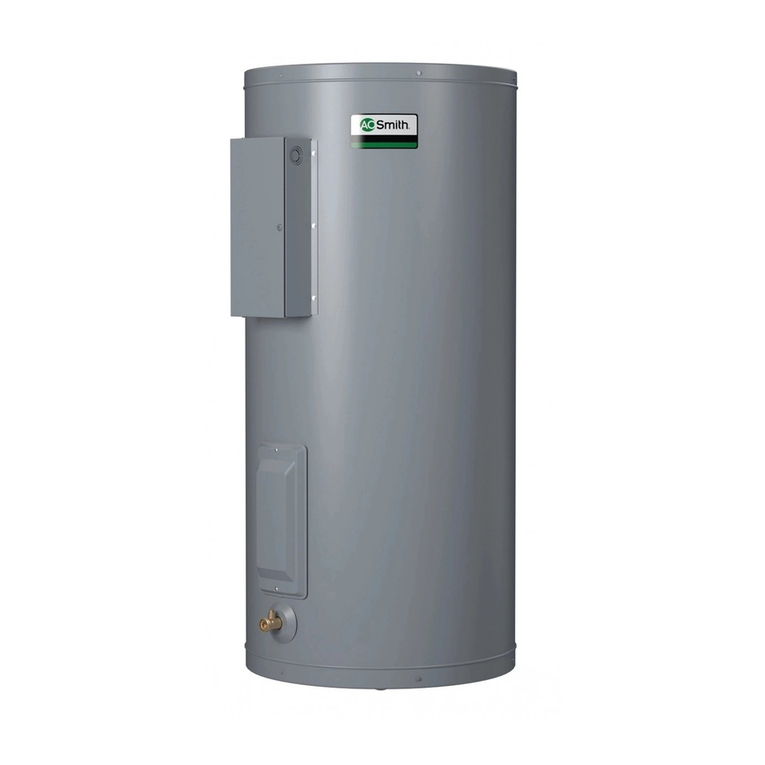
A.O. Smith
A.O. Smith DEL Installation and operaion manual

DORCHESTER
DORCHESTER DR-FC 25 Installation, commissioning and maintenance instructions
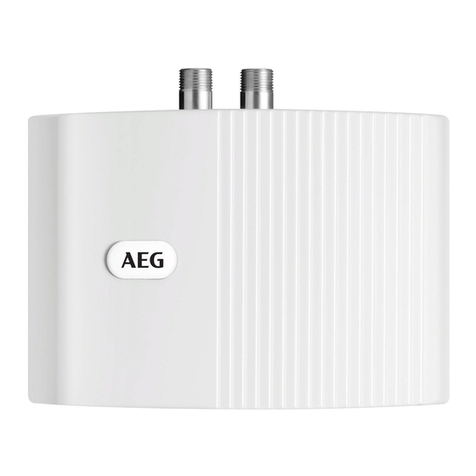
AEG
AEG MTD 350 Operation and installation
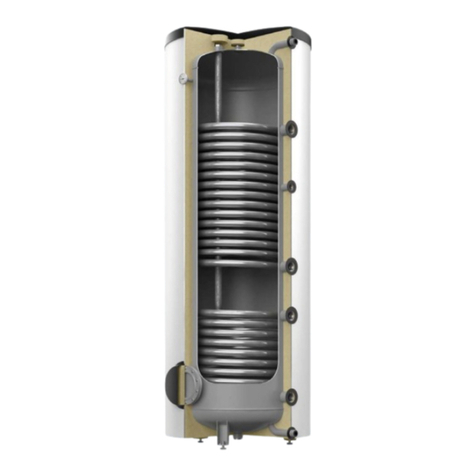
Armatec
Armatec 300-2 Installation and maintenance instructions
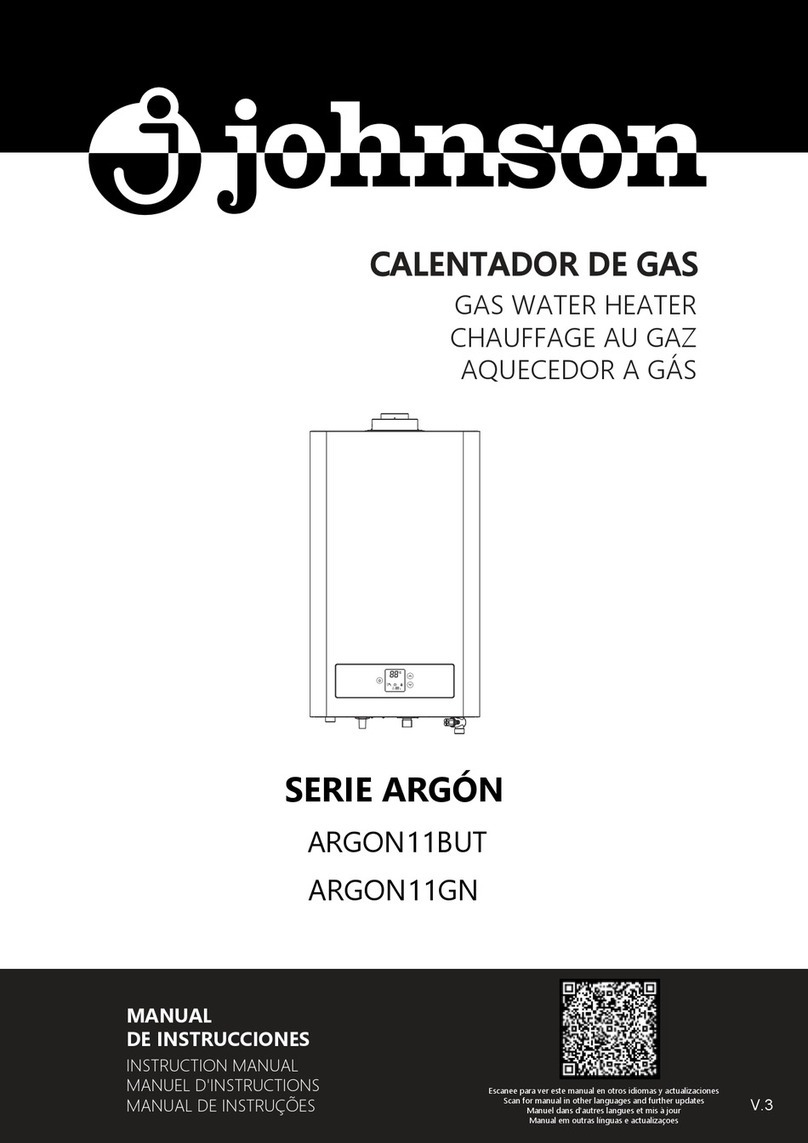
Johnson
Johnson ARGON11BUT instruction manual
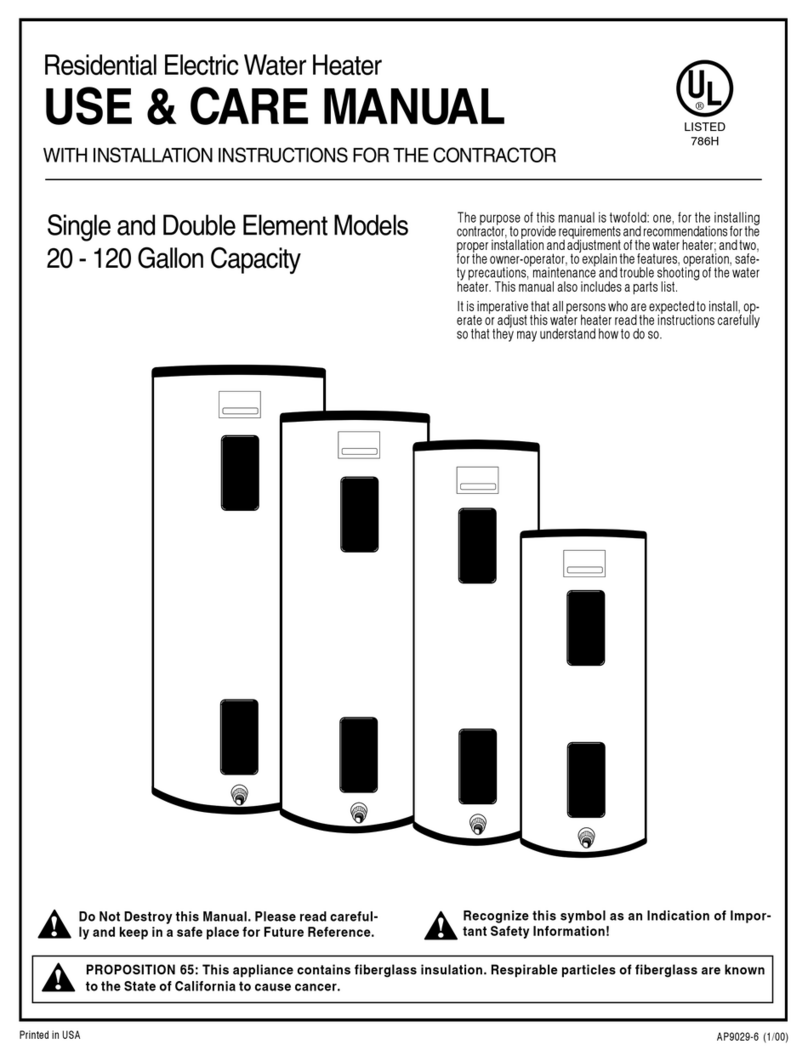
Rheem
Rheem Single Element Use & care manual
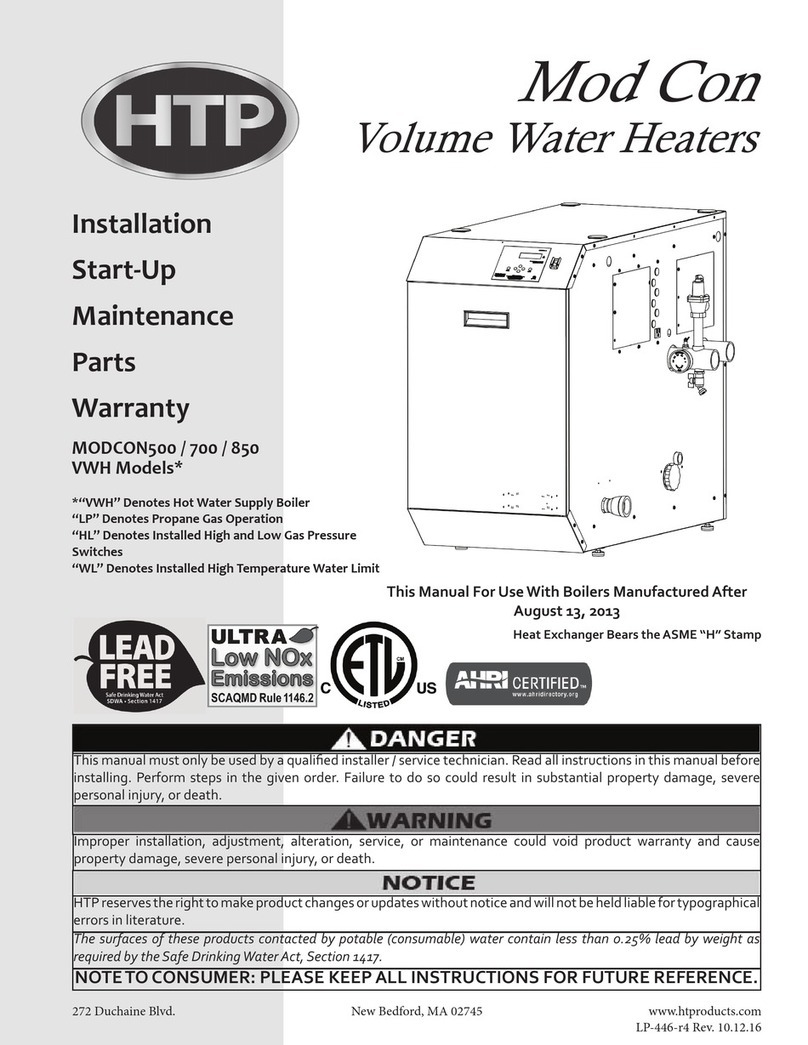
Mod Con
Mod Con MODCON500 Installation
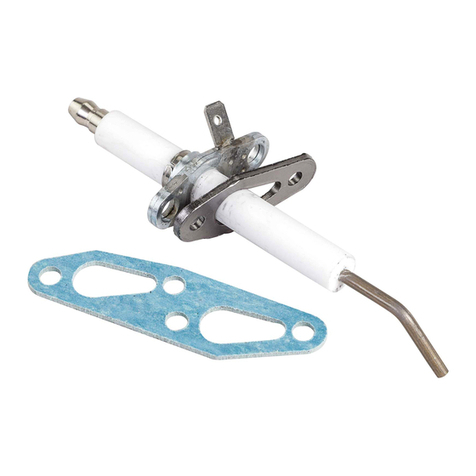
HTP
HTP Phoenix 7100P-124 Installation start-up maintenance parts
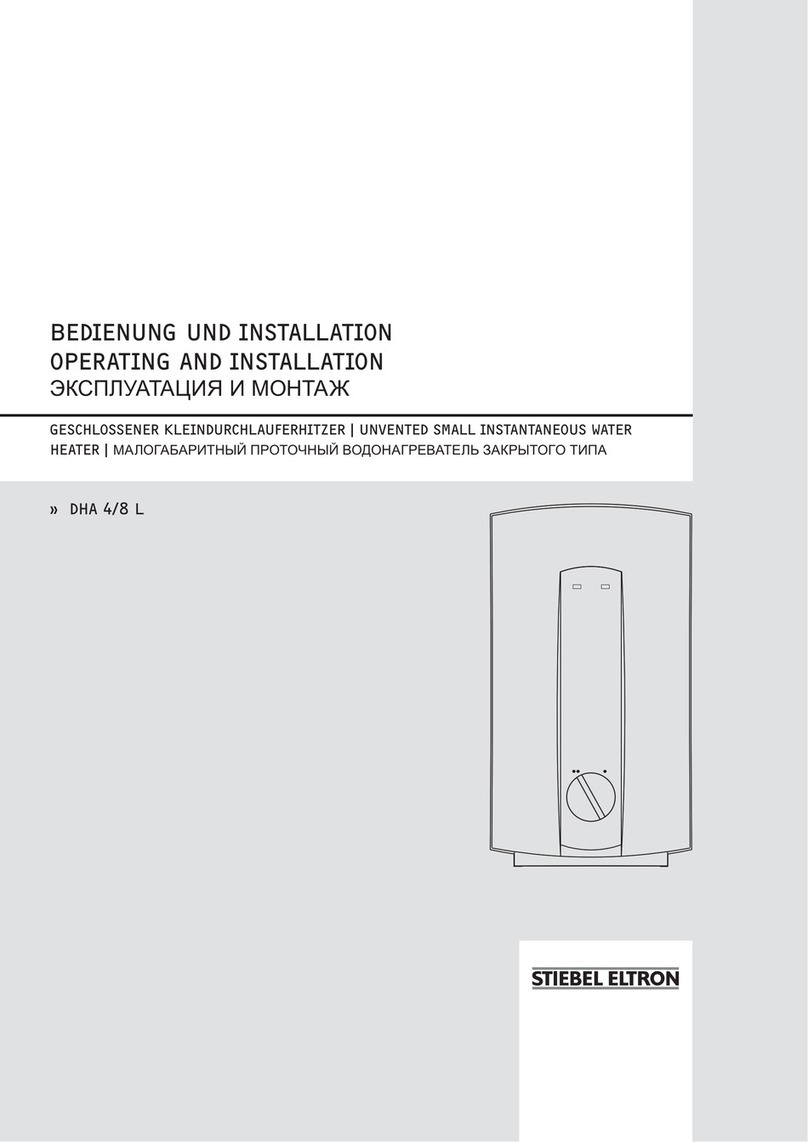
STIEBEL ELTRON
STIEBEL ELTRON DHA 4/8 L OPERATING AND INSTALLATION Manual
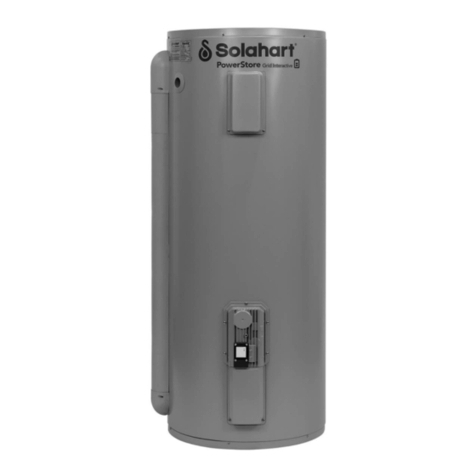
Solahart
Solahart 250E5X Owner's guide and installation instructions

BRAVILOR BONAMAT
BRAVILOR BONAMAT HWA 6 user manual



